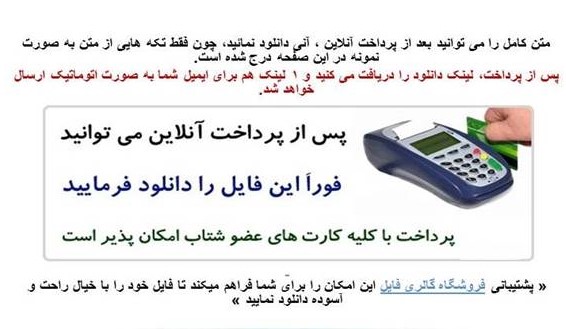

لینک دانلود و خرید پایین توضیحات
فرمت فایل word و قابل ویرایش و پرینت
تعداد صفحات: 14
Manangement in project control
I like to focus on project management on this little entry. Working closely with my collegues and senior-up's, I've realized that there is more to project management than just project management. Those two little words can actually hide a lot of verbs and necissary processes required to conduct successful project management. This I'm beginning to see. Yet so much more to actually learn. But before I focus more on this criticle aspect of an IT professionals life cycle, let me build up the plot by placing before you two normal situations that probably would have no serious bearing on the mind of a programmer: a. Programmer working on a big project where you'll be one among the many programmers working with a few modules. b. Programmer working on a project where you'll be one of the few team members working on a good chunk of the project and contributing a whole lot of stuff. Now which one sounds better? I know a few people might find both options pretty enticing. I do. But I've got something coming up in my work place that puts me pretty much in an option 'b' situation. If you ever thought about it, the kind of project you work on has implications from a career level point of view as well as on a personal level. Someone can probably lend a few words on how much weight a medium sized project with a hardly any team members can add to your resume, but from a knowledge perspective, medium sized projects with fewer team members provide a great opportunity to grow in terms of various dynamics provided you have the "Lets do it" attitude. In programming terms, you get more exposure on working the requirements and the project in its entirety and therefore you're forced to think, learn something new and implement it. In terms of management skills, an opportunity to play a lead role invariably crops up and therefore you get an opportunity to exercise people to people skills between the customer and parties concerned will be become imperitive. I remember the first project I worked for. It was just me, my colleague and a tough deadline. Late nights with lots of coffee become our best friend and carved in us a huge plethora of concepts, techniques and mind blowing solutions. That's when you realize that necessity is truly the mother of innovation. Does anyone concur? So all this sounds great and worth the effort. But evolution is taking a new turn for me and paving the way for an enhanced role. And I come back to this beautiful forum to seek opinions and expierience which I've found out have beautiful returns in terms of knowledge enhancement and getting a first-hand-view from the industry across boundries. Our team has just got a beautiful opportunity to work on a critical solution that needs to be implemented at an enterprise level in our organization. The project is challenging and I just can't wait to kick some C#. Speaking of kicking, the official kick-off for this project will hopefully occur some time next week. Apart from the programming part, my PM has further entrusted me with the added responsibility of securing and maintaining all the project processes so as get this system running within expected time

مقاله درمورد Manangement in project control
